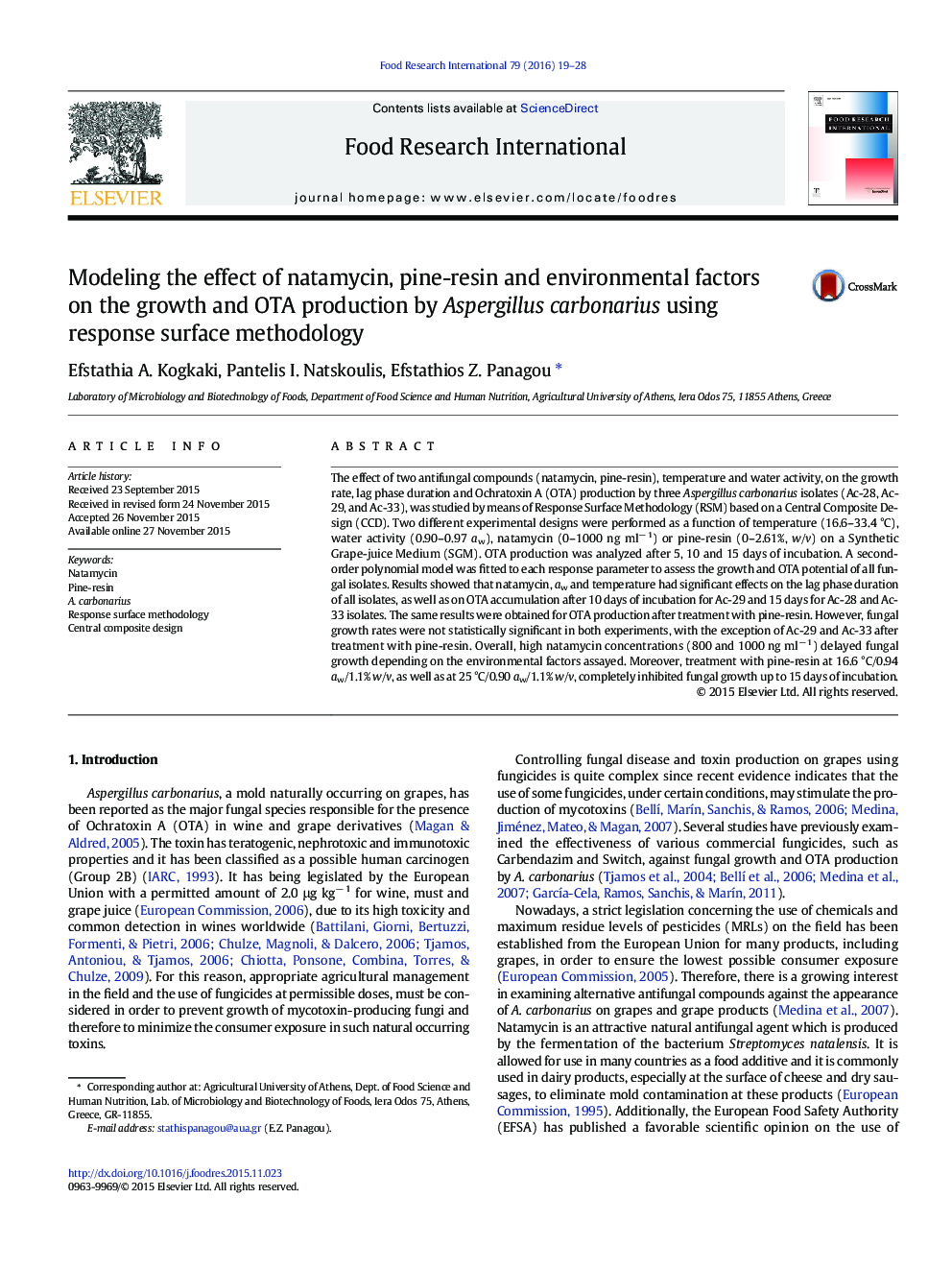| Article ID | Journal | Published Year | Pages | File Type |
|---|---|---|---|---|
| 6395038 | Food Research International | 2016 | 10 Pages |
Abstract
The effect of two antifungal compounds (natamycin, pine-resin), temperature and water activity, on the growth rate, lag phase duration and Ochratoxin A (OTA) production by three Aspergillus carbonarius isolates (Ac-28, Ac-29, and Ac-33), was studied by means of Response Surface Methodology (RSM) based on a Central Composite Design (CCD). Two different experimental designs were performed as a function of temperature (16.6-33.4 °C), water activity (0.90-0.97 aw), natamycin (0-1000 ng mlâ 1) or pine-resin (0-2.61%, w/v) on a Synthetic Grape-juice Medium (SGM). OTA production was analyzed after 5, 10 and 15 days of incubation. A second-order polynomial model was fitted to each response parameter to assess the growth and OTA potential of all fungal isolates. Results showed that natamycin, aw and temperature had significant effects on the lag phase duration of all isolates, as well as on OTA accumulation after 10 days of incubation for Ac-29 and 15 days for Ac-28 and Ac-33 isolates. The same results were obtained for OTA production after treatment with pine-resin. However, fungal growth rates were not statistically significant in both experiments, with the exception of Ac-29 and Ac-33 after treatment with pine-resin. Overall, high natamycin concentrations (800 and 1000 ng mlâ 1) delayed fungal growth depending on the environmental factors assayed. Moreover, treatment with pine-resin at 16.6 °C/0.94 aw/1.1% w/v, as well as at 25 °C/0.90 aw/1.1% w/v, completely inhibited fungal growth up to 15 days of incubation.
Related Topics
Life Sciences
Agricultural and Biological Sciences
Food Science
Authors
Efstathia A. Kogkaki, Pantelis I. Natskoulis, Efstathios Z. Panagou,
